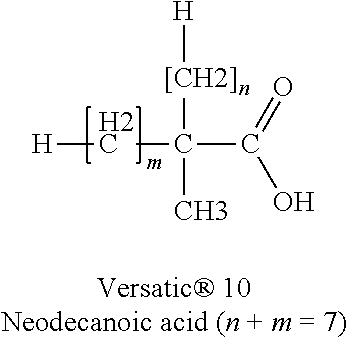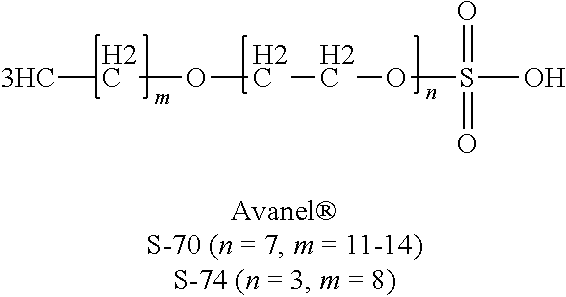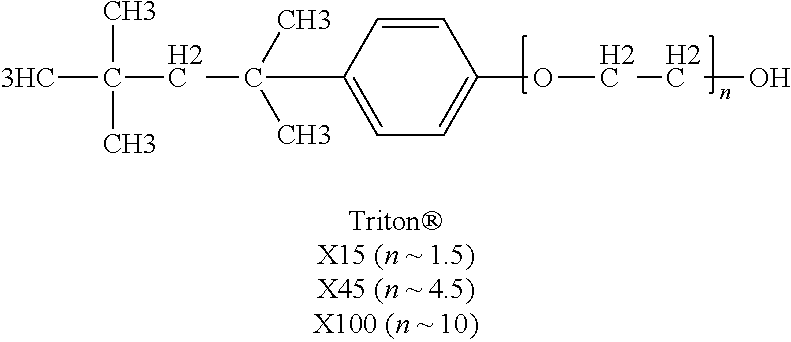Fluoropolymer resin treatment employing sorbent to reduce fluoropolymer resin discoloration
a technology of fluoropolymer resin and sorbent, which is applied in the direction of other chemical processes, silicon compounds, chemistry apparatus and processes, etc., can solve the problems of fluoropolymer resin thermally induced discoloration, undesirable color formation or increase in the fluoropolymer resin, and undesirable gray or brown color. , to achieve the effect of reducing the thermally induced discoloration of fluoropolymer resin and reducing the thermally
- Summary
- Abstract
- Description
- Claims
- Application Information
AI Technical Summary
Benefits of technology
Problems solved by technology
Method used
Image
Examples
example 1
PTFE
[0138]A 200 ml glass burette with approximately 4.6 cm inner diameter and a stopcock is used as a treatment column by inserting 4 cm of glass wool at the bottom of the burette and pouring 50 g of Calgon DSR—C8X30 activated carbon on top of the glass wool. The column is flushed with 1,000 ml of deionized water. 358 gm of aqueous PTFE dispersion is diluted to 15 wt % solids with deionized water. pH of the dilute dispersion is 2.5. The dilute dispersion is continuously poured into the burette and the stopcock adjusted to allow the dispersion to slowly flow through the column. Typical time for processing 600 ml of 15 wt % aqueous dispersion is approximately 15 to 20 minutes. pH of the once treated dispersion measures 5.1. The dispersion is run through the column one more time and the final pH measures 7.0. The dispersion is isolated, dried and characterized for thermally induced discoloration as described in Comparative Example 1—PTFE. The measured color is shown in Table 1.
example 2
PTFE
[0139]The procedure of Example 1—PTFE is repeated except that the dispersion is passed through the activated carbon column a total of three times and the final dispersion pH is 7.0. The measured color is shown in Table 1.
example 3
PTFE
[0140]The procedure of Example 1—PTFE is repeated except that the dispersion is passed through Calgon Filtrasorb 400 activated column. The final dispersion pH is 9.1. The measured color is shown in Table 1.
[0141]
TABLE 1Activated Carbon - PTFEExampleL*% Change in L*Comparative38.4Example 1 - PTFEExample 1 - PTFE49.222.1Example 2 - PTFE55.735.4Example 3 - PTFE55.535.0
PUM
| Property | Measurement | Unit |
|---|---|---|
| temperature | aaaaa | aaaaa |
| melt viscosity | aaaaa | aaaaa |
| melt creep viscosity | aaaaa | aaaaa |
Abstract
Description
Claims
Application Information
 Login to View More
Login to View More - R&D
- Intellectual Property
- Life Sciences
- Materials
- Tech Scout
- Unparalleled Data Quality
- Higher Quality Content
- 60% Fewer Hallucinations
Browse by: Latest US Patents, China's latest patents, Technical Efficacy Thesaurus, Application Domain, Technology Topic, Popular Technical Reports.
© 2025 PatSnap. All rights reserved.Legal|Privacy policy|Modern Slavery Act Transparency Statement|Sitemap|About US| Contact US: help@patsnap.com



